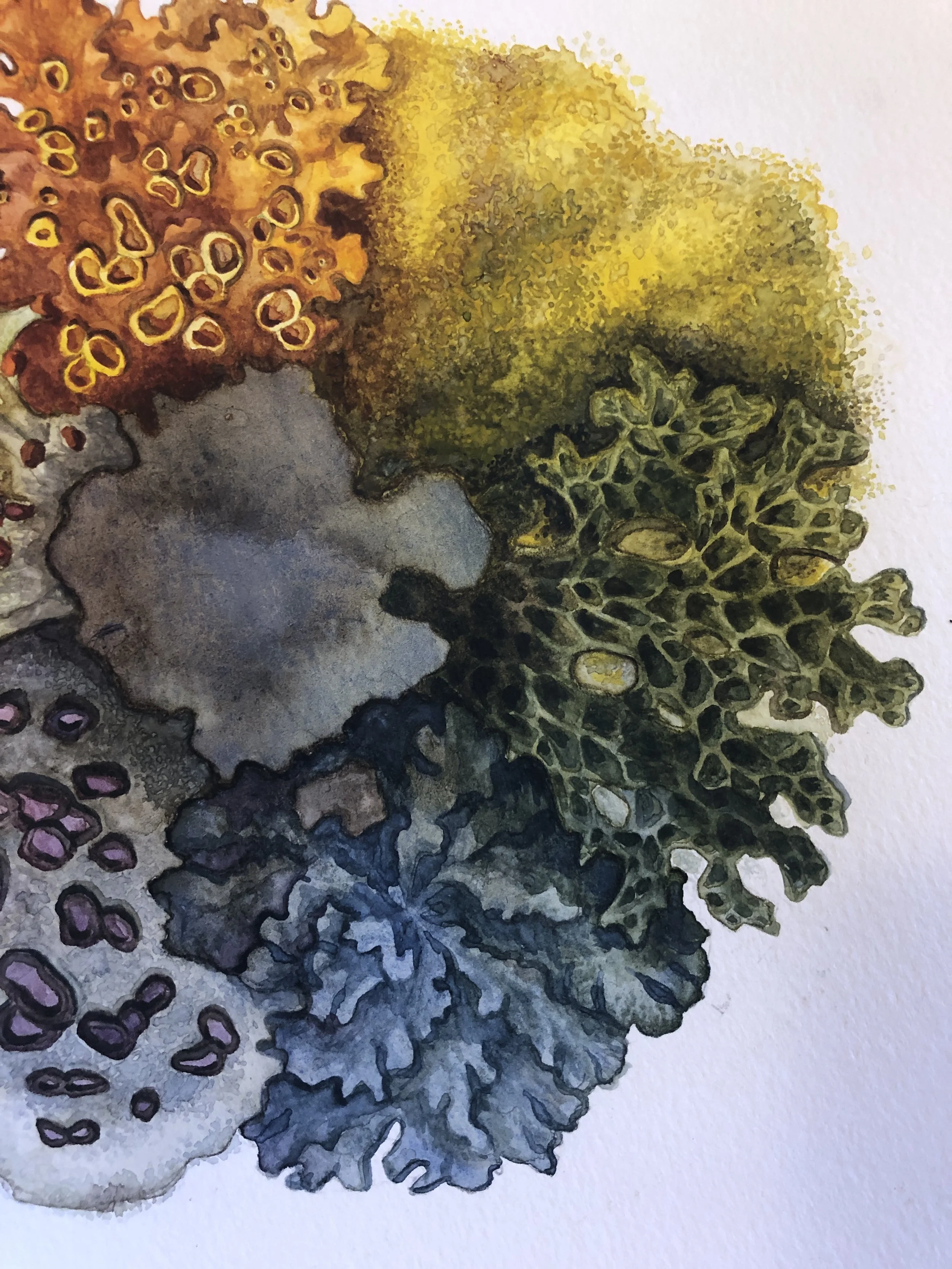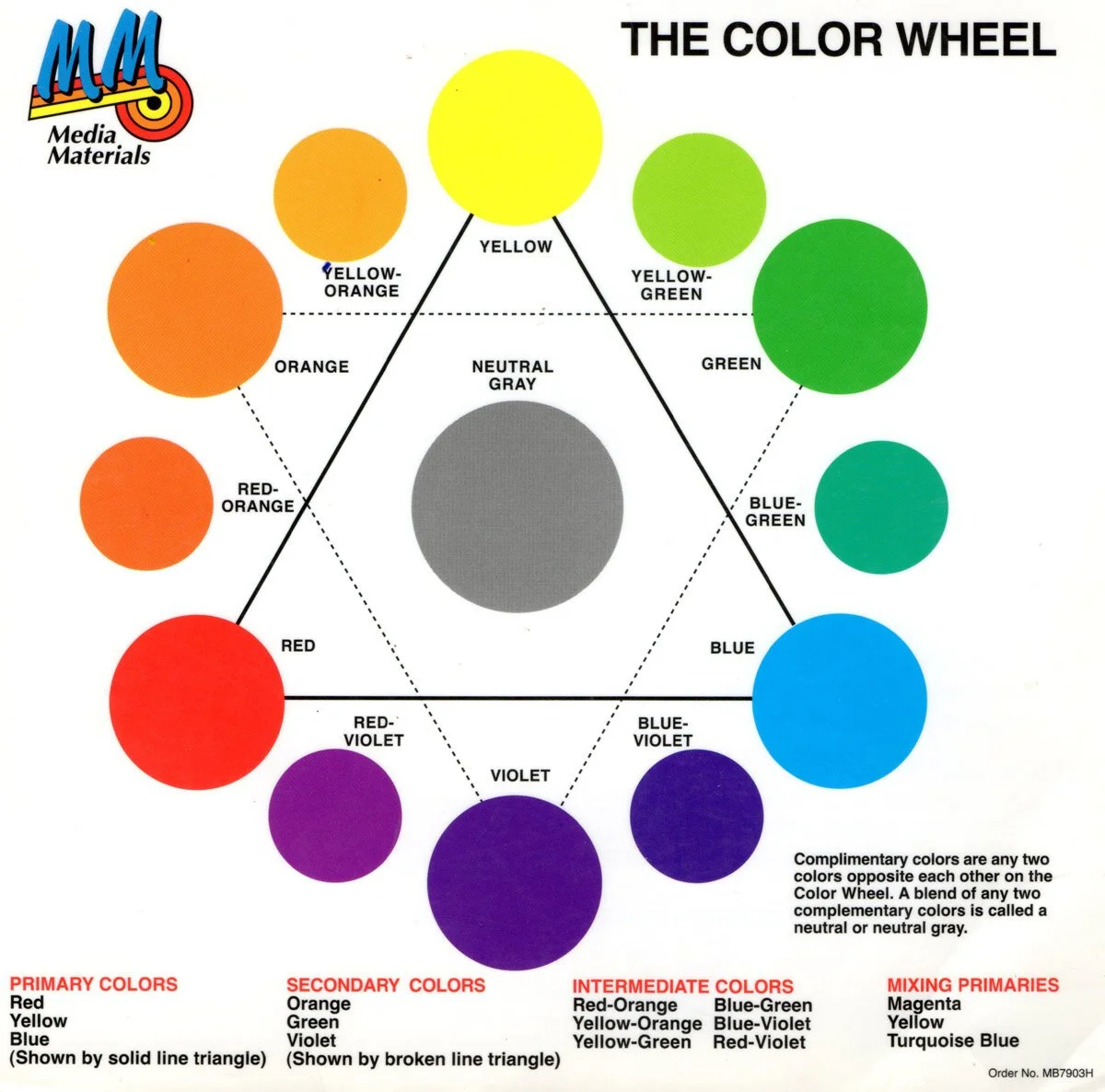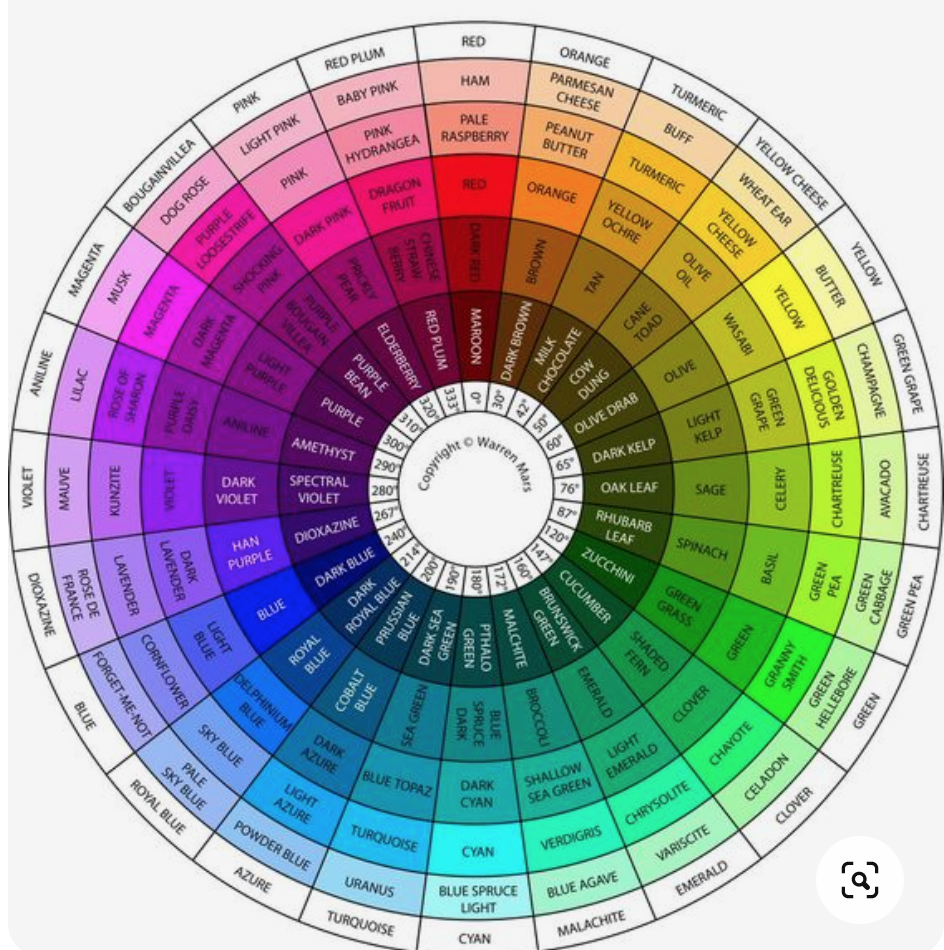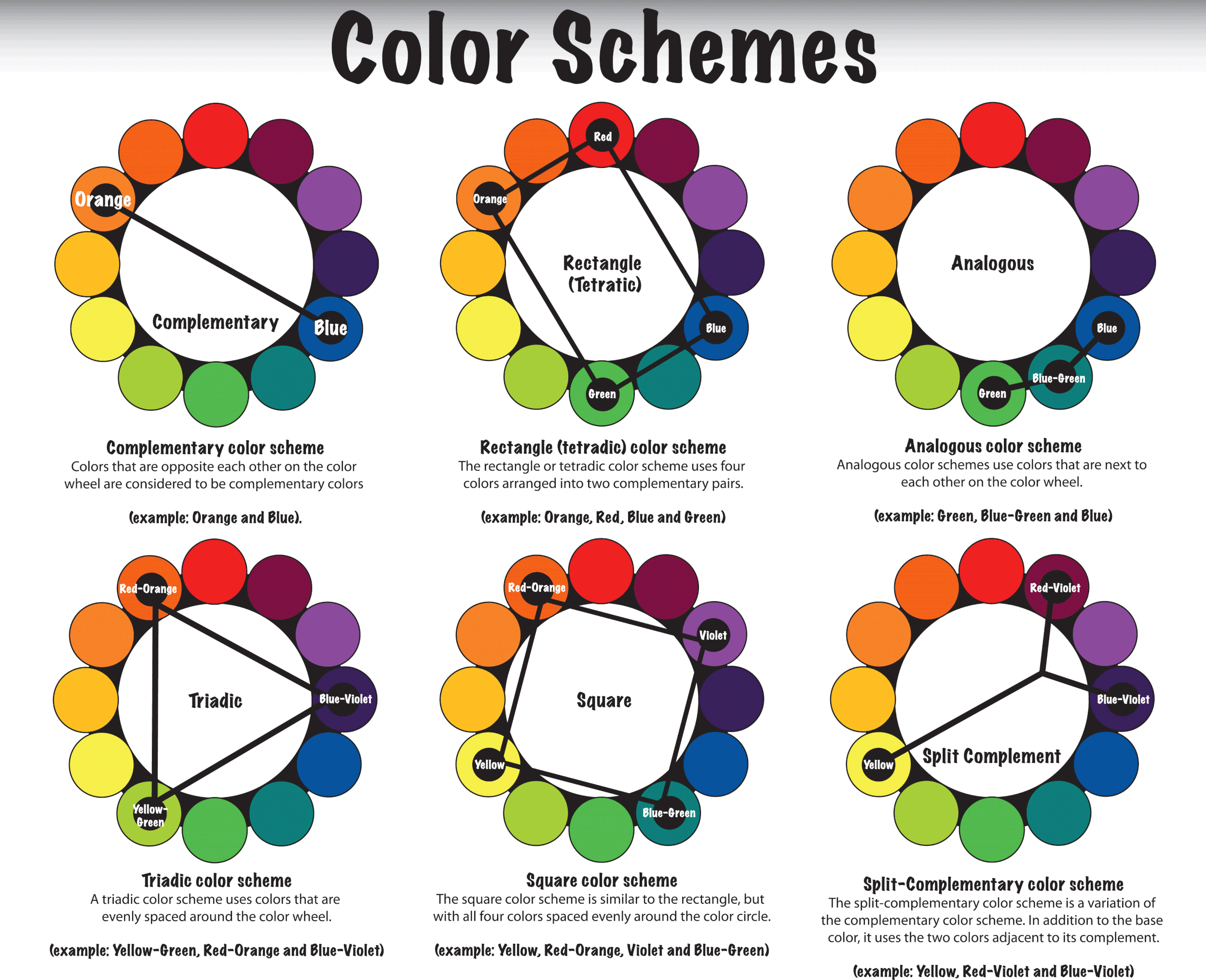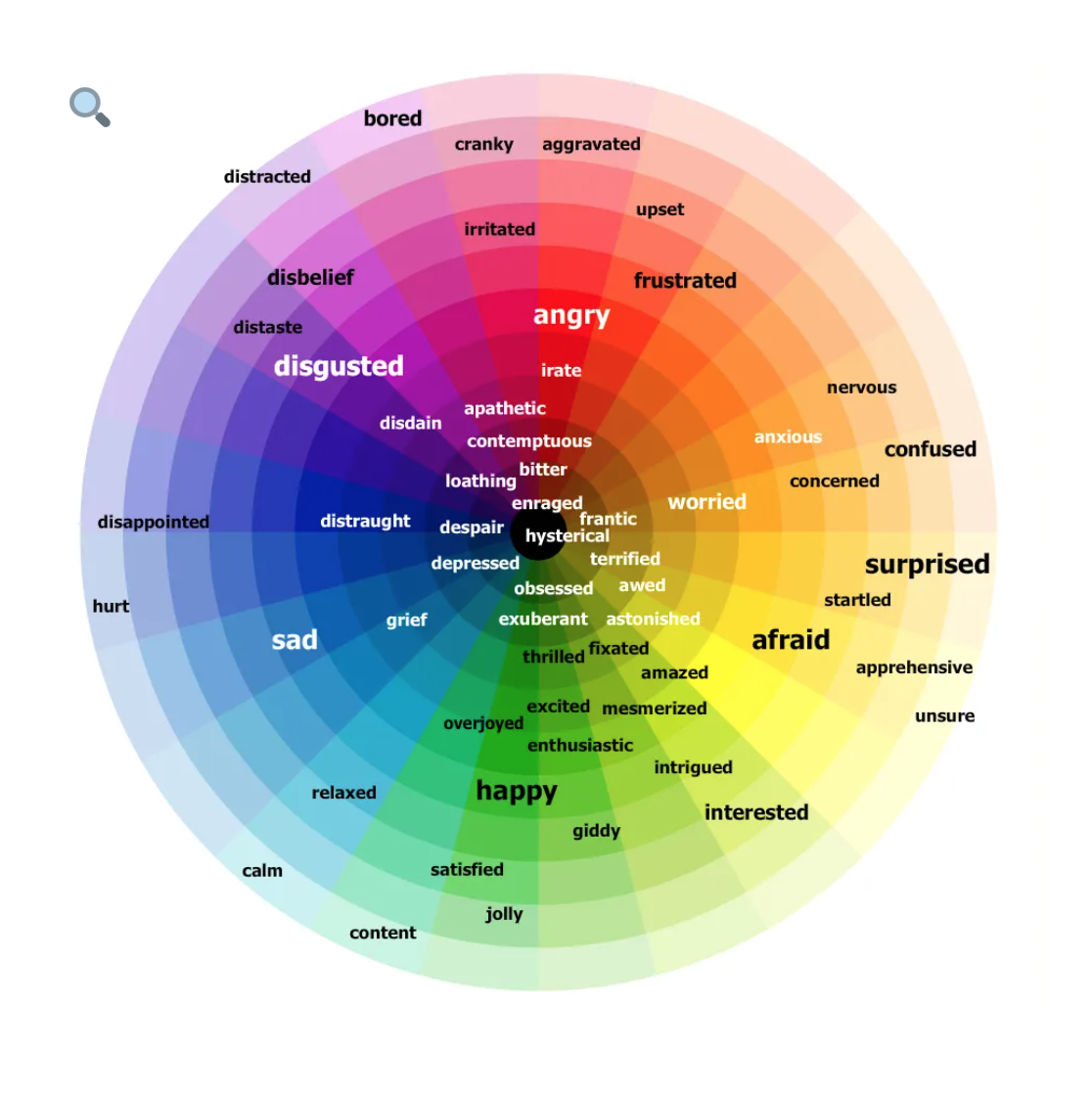Watercolors for Beginners: Foliage + Greens
Gather Supplies
-water
-paper towel / rag
-1 circle stencils- a coin like a quarter works great!
Supplies included in Kit:
-Pencil
-watercolor paper
-brushes
-palette
-3 primary paint samples: Alizarin Crimson, Cadmium Yellow, Indigo
Color Theory
Why is it useful?
You can use a color wheel to find your ‘recipe’ to mix a certain color
Color theory is a tool when creating a color scheme, for art projects, your home or garden- anything!
Color Theory is also a tool to create mood or atmosphere in a painting. These words are just some associations that certain hues can have.
Color Mixing
First we will mix our hues in our palette. Start by setting up your Primaries, straight from the sample card. Alizarin, Cadmium Yellow, and Indigo. Mix enough water in with the paint that it is saturated and flows freely.
2. Mix in your secondary colors by mixing together the primaries next to the chosen circle, to create a secondary color. For example, if I choose my top right circle, I would mix yellow and orange to create orange. Mix yellow and blue to create green, then red and blue to create purple. Try to mix colors in equal amounts, aim for a hue right in-between the primary colors. You don’t want yellow-green or blue green, you want a true middle green.
3. Mix in your Neutral Gray, center circle. Mix together all 3 primary colors to create a neutral hue. If the neutral begins to tend towards a certain hue, add the color’s compliment. Complimentary colors are located straight across the color wheel from each other. For example, if my grey was tending red, I would add green to get closer to a neutral gray.
Value
Draw a 3 lines of 1in circles. You may need a new sheet of paper for this exercise. The first line should have 5 circles, the next 6, and the next 7. We will be creating value scales from as dark as possible, lots of pigment little water, to as light as possible, lots of water little pigment.
Begin painting on the right side of the first line of 5. Use paint that is mostly water and a drop of pigment to get the lightest shade you can.
Add a drop more pigment and paint in the next circle, moving left. Keep in mind that we want the to evenly space out the jumps in value to create a gradual transition.
Continue left circle by circle, painting the leftmost as dark as possible.
Continue on to the next rows following the same steps. Each time a circle is added to the row, it will be more challenging to keep your value steps even.
Detailing
By building layers, working from light values first then on to dark, you can create lifelike paintings. You can use this layering process to add details and textures to your lichen color wheel!
Follow the example below, trying to use darker values where there are shadows, and letting your light, vibrant basecoat show through in the highlights.
Watercolor Styles
Below are some examples of illustrators, both modern and historical, that take a creative approach in composing their natural science illustrations.
Kristina Spitzner, @redbriarstudio
This artist is mindful of each individual leaflet, creating distinct edges between them. She uses a diagonal composition to draw the eye across the work.
Anne Pratt
1850s
Pratt’s use of symmetry turns the repetitive shapes of this fern into a hypnotic image.
Shayla Johnson captures the essence of emotive blooms and berries in a loose, painterly style. She encourages drips, splatters, and color blending between forms. The result is energetic and elegant.
Monica Rohan, @monrohan
This artist frequently uses tiny linework to create rich patterns of plant life and textiles. The result is a surreal world that you just want to crawl into. The swirling patterns of these grasses remind me of marbled paper.
This artist is the master of smooth blends in his foliage and crisp, seamless edges between flat planes of color. He doesn’t include much linework but still captures depth.
Matthew Palladino, Two Skeletons, 30"x22", Watercolor on Paper, 2016
Same artist as above, but a very different composition. Graphic shapes of bold color hang in the background. Note the layering of leaf shapes, emphasized with high contrasting values.
RESOURCES
Learn more about Watercolor Painting:
Keep up to date with future Solstice Handmade classes by following us on Instagram and Facebook
Guild of Natural Science Illustrators
Buy more art supplies:
Watercolor Paper: Canson Cold Press
Paint: Beam Paints, Windsor Newton
Learn more about Lichens
Activity:
Map and monitor the lichen in your backyard
Books:
Brodo, Irwin, Sylvia & Stephen Sharnoff. 2016. Keys to Lichens of North
America: Revised and Expanded. Yale University Press.
Casselman, Karen Diadick. 2011. Lichen Dyes: The New Source Book. Dover
Publications.
Lear, Linda. 2007. Beatrix Potter: A life in nature. St. Martin Press.
Waleswski, Joe. 2007. Lichens of the North Woods. Kollath-Stensaas Publishing.
Websites:
iNaturalist.org (and iNaturalist app)
Questions? Contact Community Program Manager Ellen Holste,
eholste@cedarcreekinstitute.org, 269-721-4170

